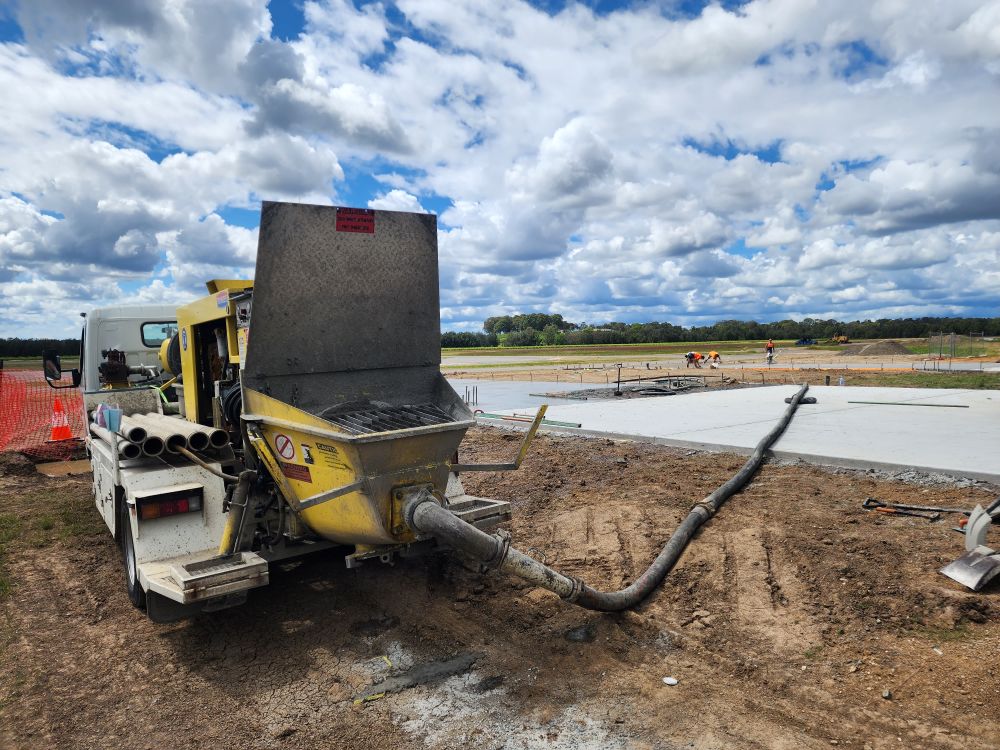Crucial Factors to Consider When Choosing Between Line Pump and Boom Pump Rentals
To make a well-informed decision regarding the most suitable concrete pump for your construction project, it is vital to understand the key differences between line pumps and boom pumps. Line pumps are exceptionally effective for residential construction and areas with restricted access, while boom pumps are designed to handle high-volume concrete pours and can reach greater distances seamlessly. When selecting a pump, it is essential to evaluate critical elements such as site accessibility, the volume of the pour, and the required delivery speed. By carefully considering these factors, you can confidently choose the pump that best fits your unique project specifications.

Unlock the Advantages of Using Line Pumps for Your Concrete Construction Projects
Line pumps are specifically designed to efficiently transport concrete through a network of steel pipes or flexible hoses, making them an excellent choice for diverse applications. They prove especially beneficial on residential construction sites, backyards, footpaths, and other locations where access might be limited. The compact design and rapid setup capabilities of line pumps allow for effective execution of smaller concrete pours, which helps to enhance project efficiency without compromising quality. By selecting line pumps, you can significantly reduce reliance on barrows and lower labor expenses on projects that are challenging for a boom truck to access, thereby streamlining your workflow and conserving valuable time and resources.
Maximize Project Efficiency with Line Pumps in Limited Spaces
In environments where available space is restricted, line pumps provide a reliable method for transporting concrete through their flexible hoses. Construction teams frequently utilize these pumps for applications such as residential slabs, footings, and smaller pours that are difficult for larger boom trucks to navigate. The quick setup and reduced operational costs associated with line pumps make them an ideal option for projects in confined areas, including narrow driveways and crowded streets. By opting for a line pump, you can ensure that your project advances smoothly without the delays and complications often associated with using larger machinery, thereby maintaining a steady workflow.
Identifying Optimal Scenarios for Utilizing Boom Pumps in Construction
Boom pumps, mounted on trucks and equipped with extendable arms, excel at reaching over buildings, into foundations, or to elevated areas within formwork. This unique feature makes them particularly well-suited for commercial sites, large concrete slabs, or any high-volume pours where operational efficiency is crucial. By employing a boom pump, you can achieve significant time savings, as operators can utilize remote controls for precise placement of concrete, thus reducing both labor costs and material waste. If your construction project requires a substantial amount of concrete and extensive reach, a boom pump will undoubtedly serve as the most effective tool to meet your needs with maximum efficiency.
Strategic Recommendations for Choosing the Right Concrete Pump for Your Project
- For small to mid-sized pours: Opt for a line pump due to its efficiency and cost-saving advantages.
- For large slabs or commercial projects: Always select a boom pump to effectively manage the necessary volume.
- In confined job sites: A line pump is the best choice for accessing areas where boom pumps cannot operate.
- When needing to reach over structures: A boom pump can cover substantial distances quickly and efficiently.
Make Educated Decisions with Hunter Concrete Pumps for Superior Outcomes
Begin your selection process by thoroughly assessing your site conditions. If access is limited or the pour is relatively small, a line pump is typically the more efficient and cost-effective option. However, for larger projects that involve multi-level buildings, significant infrastructure tasks, or heavy pours, a boom pump stands out by delivering higher volumes of concrete swiftly, effectively minimizing the need for excessive handling.
In the Hunter Valley and Newcastle regions, we often observe line pumps being employed for projects such as driveways, footings, and pool constructions. In contrast, boom pumps are favored for tasks that necessitate high volumes of concrete or vertical reach, including bridge decks, multi-storey buildings, and industrial pads. By recognizing these specific applications, you can make the most knowledgeable decision regarding your concrete pumping requirements.
The Article: Line Pump vs Boom Pump: Choosing the Best for Your Build first appeared on https://writebuff.com
The Article Line Pump vs Boom Pump: Which Is Best for Your Project? Was Found On https://limitsofstrategy.com